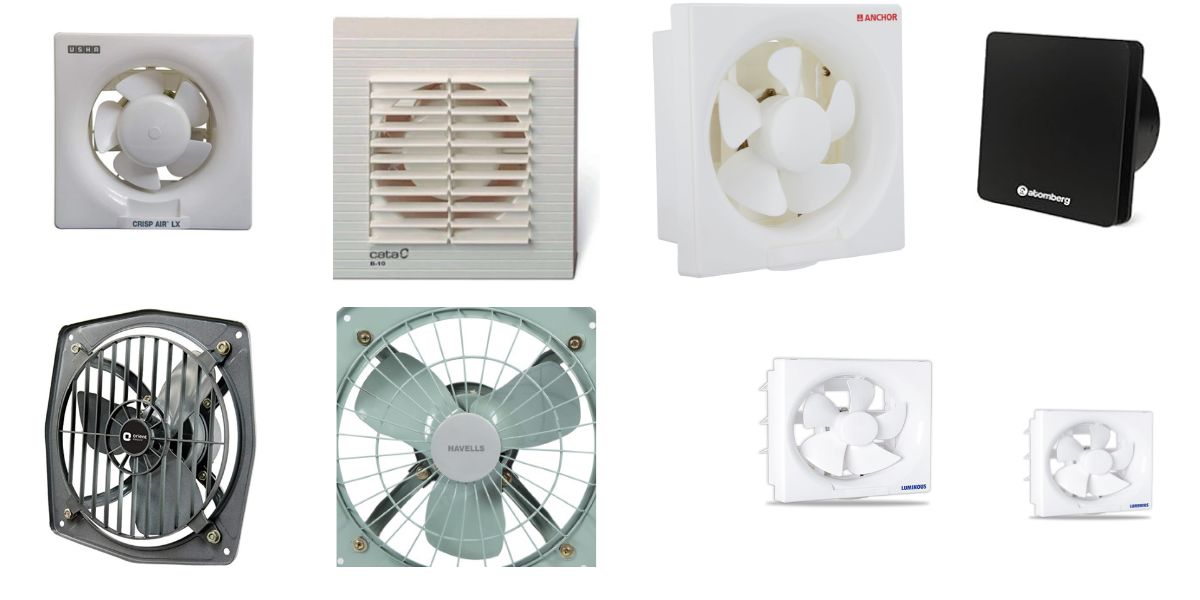Musical Instrument: Music has been an integral part of Indian culture for centuries. One of the most fascinating aspects of Indian music is the variety of traditional musical instruments used. From north to south, each state in India has its unique collection of instruments that are an important part of the folk music traditions. This article will explore 15 of India’s most popular and widely used list of musical instruments. We will read about their history, regional significance, how to play them, and more. Reading about these diverse instruments will give fascinating insights into India’s rich musical heritage.
Top 15 Best Musical Instruments Names | Prices 2025
|
|
| The Sitar | ₹10,000 – ₹80,000 |
| The Sarod | ₹25,000 – ₹1,50,000 |
| The Santoor | ₹15,000 – ₹1,00,000 |
| The Shehnai | ₹5,000 – ₹30,000 |
| The Pakhawaj | ₹8,000 – ₹50,000 |
| The Tabla | ₹6,000 – ₹40,000 |
| The Veena | ₹20,000 – ₹1,20,000 |
| The Mridangam | ₹10,000 – ₹70,000 |
| The Ghatam | ₹2,000 – ₹20,000 |
| The Nadaswaram | ₹10,000 – ₹60,000 |
| The Thavil | ₹15,000 – ₹80,000 |
| The Dhol | ₹5,000 – ₹25,000 |
| The Bansuri | ₹500 – ₹10,000 |
| The Harmonium | ₹8,000 – ₹50,000 |
| The Ektara | ₹300 – ₹5,000 |
Disclaimer: prices are may subject to change
Top 15 Best Musical Instruments Names and Information
1. The Sitar – Best musical instruments

The sitar is perhaps the most well-known of all Indian instruments globally. Originating from the Persian setar, the sitar became popularised in Hindustani classical music during Mughal times. Made from a long neck and resonating gourd with moveable bridges and multiple metal strings, the sitar requires immense training to master its techniques. The most famous sitar player is Ravi Shankar, who introduced the sitar to worldwide audiences. To play the sitar, the musician must learn complex fingering patterns called shikaris to produce melodic notes while using left-hand techniques like meend and kan to slide between frets.
Features of the Sitar:
- It has up to 20 movable bridges under the strings allowing notes to be sharpened or flattened.
- Requires extensive training under a guru for perfect intonation and ornamentation.
- Made from wood such as a tun, rosewood or sheesham with a gourd resonator.
Also Read: Top 7 Best Harmonium Brands In India 2024 | Price
2. The Sarod – Best musical instruments

Closely related to the sitar is the Sarod, another melodic lute used widely in North India. Originating from Persia as the Iranian Setar, the Sarod took on a new identity in Hindustani classical music. Distinguished by its short unfretted neck and multiple resonating strings, the Sarod has a deep, resonant tone. Legendary Sarod mastery was achieved by Baba Allauddin Khan and his sons like Ali Akbar Khan who greatly expanded the instrument’s repertoire. Playing the Sarod calls for fingering techniques like meend and kan and complex rhythmic bol and improvisational elements in raga depictions. It is truly a soulful instrument to experience in a live performance.
Features of the Sarod:
- Made of wood such as a tun with a gourd resonator and metal strings.
- It has 4 main melodic strings and numerous arab or sympathetic strings.
- Requires great left-hand control for delicate string pulls and vibrato.
Also Read: Top 15 Types of Classical Dance forms in India 2024 | Photos
3. The Santoor

Originating from Kashmir, the Santoor is one of India’s most beautiful instruments. Comprised of a trapezoidal sounding board with 100 parallel steel strings, the Santoor is played by striking its strings with two small hammers known as Ravan hats. The delicately tuned hammering of strings creates a mesmerizingly haunting soundscape. Noted Santoor players like Bhajan Sopori have brought this unique instrument into prominence as a solo concert instrument across North India.
Features of the Santoor:
- Made of spruce wood with stainless steel strings arranged in 4 octaves.
- Requires years of training to develop intricate fingering and hammer techniques.
- Originated in Kashmir valley, rooted in the Sufiana tradition of music.
4. The Shehnai

Most commonly associated with Indian weddings across North India, the Shehnai has a long history entwined with mythology. Believed to be referenced in ancient Hindu scriptures, this double-reed woodwind instrument uses circular breathing techniques to produce evocative melodies. Made of wood or bone with a conical bore and distinctive tone holes, playing shehnai is an art that takes years to perfect. Great Shehnai maestros include Bismillah Khan, who brought this illustrious instrument wider popularity. A staple of North Indian folk and semi-classical music, the Shehnai adds jubilation and celebration to classic weddings and religious occasions.
Features of the Shehnai:
- Associated with weddings, processions, religious festivals, and celebrations.
- Played expertly using complex circular breathing techniques.
- Originated from Central Asia, a seminal part of Indian classical music.
5. The Pakhawaj

An indispensable rhythm companion in Hindustani classical recitals is the pakhawaj drum. Considered the grandfather of all membrane drums in India, this two-headed barrel drum with intricate bowls is the backbone of percussion in Hindustani music. Made of wood or clay with animal skin membranes; the pakhawaj produces a signature heavy timbre. Taal virtuosos like Shankar Ghosh and Anindo Chatterjee have revolutionized our understanding of rhythm and melody coordination.
Features of the Pakhawaj
- Principal percussion instrument indispensable for tabla and other rhythmic patterns.
- Made of wood, clay, or metal with goat skin membranes tuned to different tones.
- It holds two distinct tones when played: dha and tun.
6. The Tabla

Seen as the most versatile percussion instrument, the tabla drum pair is vital for rhythmic drive in Hindustani classical, light classical, Sufi, and popular fusion music styles. Comprised of the baya and Dayan, these hand drums produce contrasting tonal ranges. With tala hardhats and intricate bols explored by phenomenal players like Zakir Hussain and Samta Prasad, the tabla is the heartbeat of Hindustani rhythm.
Features of the Tabla:
- It comprises the bass baya drum and treble Dayan drum played together.
- Made from wood or metal with animal skin membranes tuned differently.
- Produces Bol pattern cycles called Tabla-baaj or rela supporting melodic patterns.
7. The Veena

Among India’s most ancient musical instruments is the veena, a plucked string instrument born from archaeological findings dating back over 4000 years. Variations exist across South India, such as the vina, viyna, bin, ravanastroni, and more. The South Indian veena is a large instrument comprising a long hollow neck, two bridges, and around 24 strings. Carnatic music maestros like Lalgudi Jayaraman and Jayanthi Kumaresh have reignited wider veena popularity. A signature melodic solo instrument of India’s Classical South.
Features of the Veena:
- Considered the oldest surviving musical instrument in India.
- It has a gourd resonator and a long tapering neck made of wood.
- Plucked with 2 wires attached to finger plectrums producing individual notes.
8. The Mridangam

No Carnatic classical concert is complete without the energetic presence of the mridangam tandem drum. Developed as the principal percussion instrument to support the veena, flute, and vocals, the mridangam grammar of bols and rhythmic formulations keep tempo for other musicians. Comprising two sections joined via leather straps, it is made from wood of tested resonance and bound by animal skin. Talented beat-makers like Umayalpuram Sivaraman and Trichy Sankaran have set benchmarks in mridangam art.
Features of the Mridangam:
- The principal percussion of Carnatic music provides the rhythmic basis.
- Made of jackwood with tight double-sided membranes producing contrasting tones.
- Play with hands. No sticks. Hit sides with fingers to make rhythms.
9. The Ghatam

Originating from South India, the ghatam clay pot is a unique percussion instrument that adds an earthy texture to Carnatic music performances. Formed from burnt clay molded into a pot shape, the ghatam is played by striking and rubbing its sides. This ancient folk instrument was revived by masters like Padma Bhushan Trichur V. Ramachandran and others who expanded its depth and grammatical elements.
Features of the Ghatam:
- Made from burnt, unglazed clay shaped like an inverted pot.
- Played by striking and rubbing its sides to produce melodic phrases.
- It adds textural layering and crisp accents that complement the mridangam.
10. The Nadaswaram

Holding deep religious significance, the nadaswaram wind instrument native to Tamil Nadu, is often played in temple processions and ceremonial music occasions. Playing nadaswaram calls for circular breathing techniques, composed of a metal engraving with a conical wooden body, double reed, and eight finger holes. While leading devotional music, a melodious nadaswaram backed by a thavil drum creates an uplifting effect.
Features of the Nadaswaram:
- Used in Hindu temples mainly for processions, festivals, and ceremonies.
- Made from a metal engraving bonded to a wooden conical body.
- Played expertly employing circular breathing techniques through the double reed.
11. The Thavil

Complementing the nadaswaram in temple music and folk, the thavil double-headed drum regulates the beat with finesse. Master Thavil artists can play accompaniment for various speeds and tails. A cylindrical wooden body joined by leather cords holds two stretched goat skin membranes. Versatile thavil bols support biogas, Calais, and rhythmic innovation within improvisations. Great exponent Vikku Vinayakram has exhibited the instrument’s full range through fusion collaborations breaking boundaries.
Features of the Thavil
- Paired with nadaswaram in temple and folk music, it sets the rhythmic pace.
- Made from jackwood with double membranes played together, producing contrast.
- Capable of complex bols, improvisations aligning with varying speeds and talas.
12. The Dhol

A staple percussion of North Indian folk, the dhol is indispensable to Bhangra and Punjabi cultural music. The barrel-shaped drum, comprised of two membranes played by hand, adds robust energy. Skillful dhol walas are featured in wedding bands. A prominent feature is the ‘baaj’ punctuating rhythms for dance. Made from wood or steel and varying in size, the dhol is also popular in Sufi and Qawwali music.
Features of the Dhol
- Paired often with the ‘baaj’ stick for accented backbeat rhythms.
- Made from wood metal with double membranes for robust low and high tones.
- Capable of driving fast folk tales for dance forms like Bhangra.
13. The Bansuri

One of the most soothing instruments, the bansuri bamboo flute resonates with mellifluous ragas across North India. Made of select bamboo engraved to perfection by stalwart artisans, the six-holed transverse flute requires mastery of breath control. From Pannalal Ghosh to Hariprasad Chaurasia, legendary flutists have created masterpieces on this natural woodwind. Its pastoral charm is accentuated when imbibing an alaap or jamming with other melodic strings.
Features of the Bansuri:
- Six-finger holes enable playing intricate scales and embellishments.
- Crafted locally from specific bamboo nodes, treated through aging.
- It requires mastery over breath modulation, note bends, and ornamentation.
14. The Harmonium

A staple of light classical and devotional music genres, the portable mouth organ or chromatic button accordion is a favorite accompaniment. Its varied stops allow easy toning of Western and Indian melodies. With innovative artists like Annapurna Devi and KG Papanasam, the harmonium gained popularity with thumri, bhajan and ghazals. A household name for its affordability and use in religious worship.
Features of the Harmonium
- Portable, light carry home instrument played using air pressure from the mouth.
- Keyboard with buttons enabling various scales and sustaining refrains.
- Accompanies vocals effectively due to paired melodic and drone capabilities.
15. The Ektara

India’s simplest one-string folk Musical instruments carry rural folklore across regions. The ektara’s short neck attached to a circular resonator produces plaintive melodies and bols when stroked. Traditional folk artists infuse local folk tales and humor through this accessory. Farmers often render melodies in villages on their way to their agricultural fields.
Features of the Ektara:
- One main string played with a small plectrum producing simple melodies.
- Crafted locally using a gourd or dried wood serving as a resonator.
- Carries folkloric storytelling tradition through rustic tunes and tales.
Best Musical Instruments Names for Beginners
|
|
|
| The Sitar | Intermediate | ₹10,000 – ₹80,000 |
| The Sarod | Advanced | ₹25,000 – ₹1,50,000 |
| The Santoor | Intermediate | ₹15,000 – ₹1,00,000 |
| The Shehnai | Intermediate | ₹5,000 – ₹30,000 |
| The Pakhawaj | Intermediate | ₹8,000 – ₹50,000 |
| The Tabla | Beginner to Intermediate | ₹6,000 – ₹40,000 |
| The Veena | Advanced | ₹20,000 – ₹1,20,000 |
| The Mridangam | Intermediate | ₹10,000 – ₹70,000 |
| The Ghatam | Beginner | ₹2,000 – ₹20,000 |
| The Nadaswaram | Intermediate | ₹10,000 – ₹60,000 |
| The Thavil | Intermediate | ₹15,000 – ₹80,000 |
| The Dhol | Beginner | ₹5,000 – ₹25,000 |
| The Bansuri | Beginner | ₹500 – ₹10,000 |
| The Harmonium | Beginner | ₹8,000 – ₹50,000 |
| The Ektara | Beginner | ₹300 – ₹5,000 |
Disclaimer: prices are may subject to change
Top 5 Famous States For Musical instruments
|
|
| Kashmir | Santoor, Rabab, Sitar |
| Punjab | Dhol, Tumbi, Sarangi |
| Tamil Nadu | Nadaswaram, Thavil, Veena |
| West Bengal | Baul Instruments (Ektara, Dotara), Tabla |
| Rajasthan | Sarangi, Morchang, Kamayacha |
Conclusion
India’s diverse array of musical instruments explored here showcases the profound heritage embedded in various regional arts. Learning about these instruments provides cultural context and a glimpse into their importance in everyday life. Further, it exhibits how music forms a core part of India’s cultural fabric across eras. Each instrument narrates a tale of community, tradition, and identity. In today’s times of fusion and experimentation, these roots ensure the constantly evolving spirit of Indian music stays true to its foundations.












Add Comment